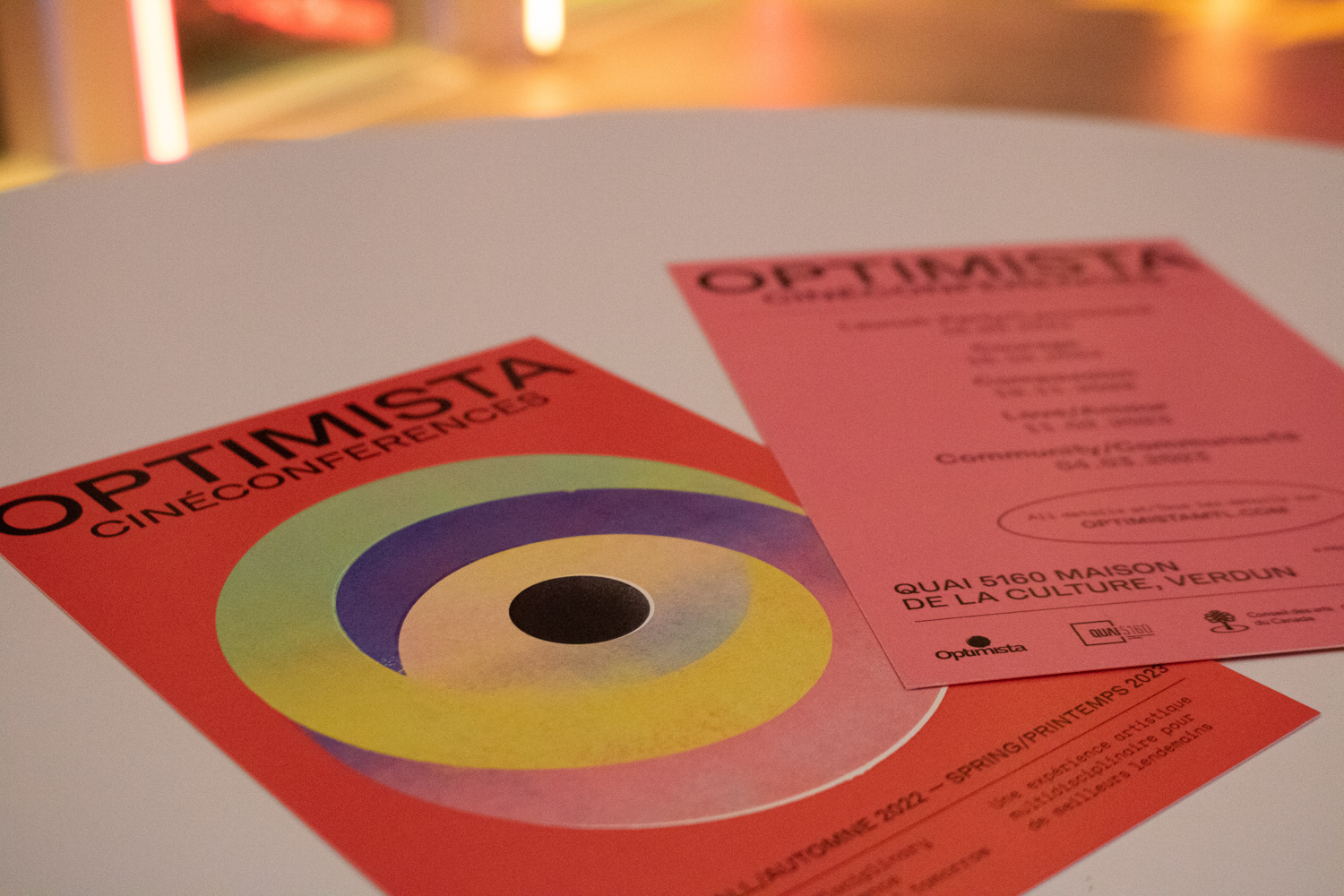An exhibition about having courage against all odds
Saturday, Oct. 15. marked the launch of the Optimista Conferences organized by Yellow Pad sessions. Each conference has a specific theme: courage, compassion, love, and community.
The Concordian had the chance to speak with Grace Sebeh Byrne, one of the co-founders of the series of cine conferences, to get a better understanding of the idea behind the event.
“Optimista is a response to what happened during the pandemic. Before Optimista we used to put on more traditional film festivals. But then we have kids in our twenties, we mentor a lot of young people and it’s very clear that there is a sense of hopelessness and despair and mostly isolation. That’s a big horrible thing, to experience isolation,” Byrne explained.
During a time when we all felt isolated during the pandemic, Byrne wanted to come up with something that would bring back hope into the community.
“We are very passionate about the arts. Art we know is a powerful tool for social change. We asked ourselves, what are we going to create, a nice and safe and welcoming immersive experience. People can come in and enjoy the arts and at the same time explore themes,” Byrne said.
Over the course of four cine conferences, art lovers can gather and experience various keynote speakers, performers, and photo galleries grouped together for every themed night.
On the opening night of Optimista, there was the visual artist Augustina Pedrocca exhibited her photographs entitled, Happy and Beautiful out of Spite.
Pedrocca presented an evocative series of portraits that clearly documented the loves, pleasures, hardships, and heartaches of Montreal’s Queer Community.
During the main portion of the night Diana León, a performing artist, put on a beautiful choreographed performance. The main idea behind her performance was to put forth the idea of self-love despite the times that we live in.
Two documentaries were shown during the inaugural night. The first was a short film entitled The Black Cop by Gamal “G” Tuwara.
Tuwara flew all the way from England just to be a part of the conference and give a talk about his documentary.
The Black Cop follows Tuwara’s journey in the British police force. He explored his earliest memories of racial profiling and harassment in the force, as well as the homophobia he endured.
The second film of the night featured a longer documentary entitled Writing with Fire which followed the story of India’s only women-run newspaper. It was directed by Rintu Thomas and Sushmit Ghosh.
The Concordian had the honour of getting to chat with Tuwara right after the screening of the film. Tuwara, or G as he prefers to be called, gave The Concordian truly inspiring advice for individuals that face adversity in their chosen career field.
“First of all, I would say to build up your network around you and find people that you can talk to and trust. Talking and sharing the story is what makes it. Don’t be afraid to ask for help. I know it could be scary asking for help because in your head you think that you might be failing. It’s quite the contrary, asking for help makes you stronger,” G explained.
If you can take anything away from the inaugural event, it is the following; don’t be afraid to be yourself in dark times and pursue what you believe in.
Photographs by Dalia Nardolillo/The Concordian
